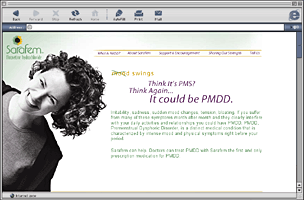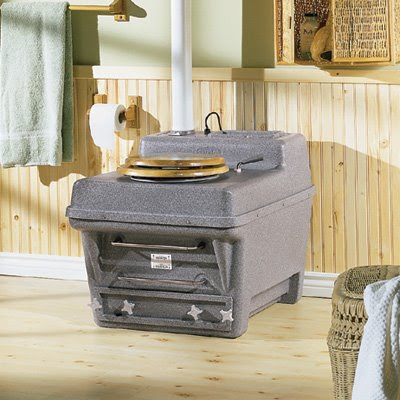
Take a look at our friend Jun Wah Lee's blog. It's fabulous, just like Jun Wah.

I occasionally receive hate mail or email from MD's DC's who 'think' they are superior to us L.Ac.s in acupuncture and often try to spew out propaganda.
For example, here are a few things I just received from a chiropractor. If you could answer a few of his comments I will try to make a great blog post out of it. Just email it to me. Thanks!
In responce to your description of the difference between medical acupuncture and tcm style...obviously you are ill informed.
1. the training of a TCM style acupuncture actually includes roughly 300 hours of acupuncture (I did a nationwide survey of acupuncture school catalogues and phone survey).
2. the remaining hours is dealing with learning how to diagnose, qigong, tui na and of course herbal medicine which historically is thought to be superior to acupuncture.
3. I can only speak for chiropractors... I teach acupuncture at a texas chiropractic college... we have 4400 hours of medical training prior to taking the required 100 hours for the state of texas...and then an additional 300 hours that we offer. We offer acupuncture and nothing but acupuncture. we do not offer tui na, qigong or herbal medicine.
4. we study the broad spectrum of chinese acupuncture and japanese along with a 50 hour course on the ear alone. Roughly 1/2 the course is lab time practicing acupuncture techniques.
5. We do a typical medical examination with the use of labs and xray, blood tests etc and combine things like the 8 diagnostic criteria, 5 elements, etc.
6. We are in complaince with the World Health Organization regulations regarding physicians who are already trained in medicine.
7. If you are an acupuncturist..then you know as well as i do that 300 hours is more than what you would need to be competent in acupuncture.
Please stop attempting to fool the public. I have a full time acupuncunture practice in Houston and make many people well.
By the way there are 48,000 chiropractors trained in acupuncture in the U.S. practicing safe and effective acupuncture.
There are a couple common denominators. It's not about do you smoke; it's not about do you eat fish, or vegetable or zucchini or ling zhi or ginseng, or chicken or tofu, it's not about that. Do you drink alcohol, whiskey, wine, lime juice... it's not about that. It's about number one: can you still walk? Motility, mobility. That's why tai ji says, first things first: train your legs, train your foundation.
Two, interestingly enough, all the centenarians were still working. Working. Busy. They got things to do, places to go, hands to shake, babies to kiss... people to make contact with. There's service, they're still servicing. Selflessly. Wu wei.
While few people would fill out a detailed questionnaire about their health and hand it over to a drug company looking for suggestions for new medications, that is essentially what RealAge is doing.
RealAge acts as the middleman between the drug companies and its members: it sends the e-mail messages from its own address and does not release members’ names or e-mail addresses to drug companies. That is because pharmaceutical advertisers are among “the most heavily regulated industries in the world, and they don’t necessarily want those e-mail addresses — they like that we’re a proxy for their messages,” Mr. Mikulak said.

All of them drank Erka Shizheng Herbal Tea twice a day and soaked in an herbal bath for 20 minutes daily. They also applied an herbal cream to their skin two or three times a day and had acupuncture treatment.
At the start of the study, more than half of the participants had severe symptoms on a standard scale that doctors use to gauge eczema severity. After eight months of treatment, most had mild symptoms.
“Improvement in symptoms and quality of life was seen as early as three months,” Wisniewski says. She showed before-and-after photos of several children to document their progress: Red, scaly feet and hands appeared normal six months into therapy.
Participants also reported a reduction in the use of steroids, antibiotics, and antihistamines within three months of being treated with traditional Chinese medicine.
The herbal treatments proved safe, with no abnormalities in liver and kidney function observed, Wisniewski adds.
“Chinese medicine is a very good alternative to conventional therapy for children with eczema,” she says.




Women need to know that they are being studied, targeted, and manipulated by very effective advertising that has little to do with good science. The ads and the target markets are heavily researched by internal marketing departments, branding experts and advertising companies.
In order to effectively drive sales with the important female demographic, companies first identify which issues in life women are most concerned and/or insecure about. They then develop their entire marketing campaign around those issues rather than the specific science of the drug. Big bucks go into finding the emotional hot button for any given pill or medical problem. The majority of ads feature sexy, smiling, happy people -- walking by the lake, rolling around with their children, or on a fun/hot date. We all want a little piece of that, don't we? Pharma knows how to play off of women's deepest insecurities and our biggest dreams...and it works.



Then there’s the sitting problem: in most urine-diversion toilets, a man must empty his bladder sitting down. This wouldn’t be a problem in some countries — Germany recently introduced a toilet-seat alarm that admonishes standers to sit — but it has been in others. Professor Jenssen was flummoxed by one participant at a training workshop in Cuba who said firmly, “If a man sits, he is homosexual.”

The Mind (Shen) is the consciousness that is responsible for thought, feeling, emotions, perceptions, and cognition. The Mind resides in the Heart and it is primarily for this reason that the Heart is called the 'Emperor' in relation to all the other Internal Organs. As the Mind is the consciousness that defines us as individual human beings and that is responsible for thinking, willing and feeling, the Heart plays a leading role among the Internal Organs.
The Intellect (Yi) is responsible for memory, concentration, thinking, logical thinking, capacity for studying, and application. In pathology, the capacity for thinking may become pensiveness, overthinking, obsessive thining, fantasizing or brooding. The intellect resides in the Spleen.
The Corporeal Soul (Po) is responsible for physical sensations, feelings, and generally somatic expressions. It resides in the Lungs and it plays a role in all physiological processes of the body. It is formed at conception, it is Yin in nature, and, at death, it dies with the body returning to the Earth. The Corporeal Soul is described as the 'entering and exiting of the Essence (Jing)'.
The Will-power (Zhi) resides in the Kidneys and it is responsible for will-power, drive, determination and constancy.
The Ethereal Soul (Hun) is a soul that is Yang in nature and that, according to Chinese culture, enters the body three days after birth and is imparted to the baby by the father. After death, the Ethereal Soul survives the body and returns to a world of spirit. The Chinese character for Hun confirms the spiritual, non-material nature as it is made up by the radical gui, which means 'spirit' or 'ghost', and the radical yun, which means 'clouds'. The Ethereal Soul resides in the Liver and particularly in the Blood and Yin of the Liver where it should be 'anchored'; if Liver-Blood is deficient and the Ethereal Soul is not anchored in the Liver, it 'wanders' at night and causes the person to dream a lot. The Ethereal Soul is described as 'the coming and going of the Mind (Shen)'.


[...] federal health officials are forcing a growing number of drug and device makers to post publicly all payments made to doctors who serve as consultants or speakers.

It could be said that the greatest overall differences in Chinese herbal medicine between the US and Asia relate to dosage. In Asia, raw herbs are generally taken by decoction at a dose of one pack per day, whereas in the Americas, one pack of raw herbs is often taken for two days. Despite the fact that North American patients tend to have a higher body weight than their Asian counterparts, they often consume Chinese herbs at a dosage that is essentially half of the traditional dose.
In a similar paradox, Taiwanese granules are often prescribed at doses that are a fraction of the doses used in Taiwan. Part of the confusion seems to lie with the labeling information, which is required by US law to state a specific dose. Given the litigious nature of American society, most companies are understandably cautious in their dosage recommendation, so the dosage listed on the label is often well-below the dosage that is regularly used by a trained practitioner. Furthermore, most loose granules have the Asian labeling on concentration ratios removed for the US market, so practitioners are often at a loss to know how the powder corresponds to the raw herbal weight.
Taiwanese granules are generally used at a dose of around 18g/day in Taiwan, but many practitioners in the US use doses as low as 4—6 g/day. Perhaps the majority of Western practitioners prescribe granules in a dose range of around 6—12g/day, but many practitioners remain uncertain about how proper granule dosing is determined. Additionally, many instructors in American schools come from China but teach in schools that stock Taiwanese granules, which are more prominent on the American market. The granule product is different than what they used in their training in China, and teachers cannot effectively educate students on granule dosage because the standard raw dose equivalent is absent from the label. Consequently, practitioners often rely on the label information, which is essentially just an overly cautious (read: “please don’t sue me”) guideline that is required by FDA laws.